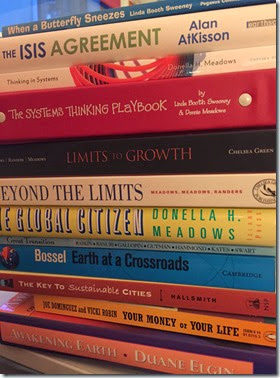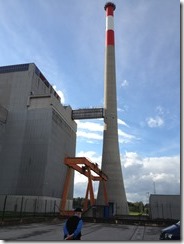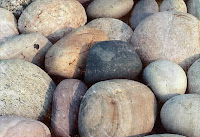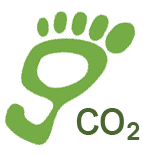I used some of the precious end-of-year calm to reflect on our work over the last 10 years, and look forward to the new decade. What had we done? Practically speaking, I created a spreadsheet of all the Bright Green Learning projects that we have undertaken between 2009 and 2019 – projects of all types, from designing Training-of-Trainers workshops for Disaster Risk Reduction trainers, through a strategic review of an organization-wide capacity development programme in a large sustainable development organization, Public Private Development Partnership learning products developed for a UN agency, to facilitation design and delivery for a broad range of co-creation workshops, and on and on. We had undertaken 351 projects in all!
It was a wonderful exercise to look back and remember those projects, the different types, outcomes and outputs, the organizations we had the pleasure to work with, and all that we learned. In my spreadsheet, I also specifically indicated WHERE we learned it, that is, I had fields that captured the region and the country where we had travelled to do this work. My motivation for collecting this specific additional data was to ascertain how many flights we had taken, and, ultimately, approximately how much carbon we emitted by flying to undertake these projects over the 10 years.
Calculating Your Carbon Emissions
This final step was a big job, and it took me some time to pull all the data together. Here is how I did it, in case it inspires others in a similar direction:
Step 1: On my aggregated project spreadsheet, I identified all the projects that involved flights (thus I did not include projects where we took the train or other ground transport) – I focused this exercise on carbon emitted from air travel. We had together taken 123 flights in the last 10 years.
Step 2: I divided all the flights taken into the four ranges that they use on the transport tab of the UN Carbon Offset Platform, that is:
- Very Long Range: Over 12,000 km or over 14 hours of travel
- Long range: Between 6,000 km and 12,000 km or between 8-14 hours
- Medium range: Between 3,000 km and 6,000 km, or between 6 and 8 hours
- Short range: Under 3,000 km or under 6 hours of travel
In order to calculate the flight times/distances, I used an online flight time calculator to get the figures from our home base of Geneva, Switzerland.
What I found was that the majority of our flights were short range (UK, Sweden, Jordan, Armenia, etc.), but still, nearly a third were long range flights (Tanzania, Japan, Singapore, Mexico, etc). If a country/city was at the upper limit of a range, I moved it into the higher range.
Step 3: For each of the ranges, I allocated a rough average of tons of CO2. I did this generously, using the upper ranges for the sample flights that I plugged into two flight carbon footprint calculators. Note that I didn’t use the calculators to determine an overall carbon footprint, I used the flight components to establish a CO2 emission figure for each of my four ranges. I used two to cross check the figures – Fly Green and Flight Carbon Footprint Calculator (by Carbon Footprint). I used these sites to attribute a figure to each of my ranges. (Note that they both also offer offset services.)
I ended up with the following tons of carbon for round trip flights in each of these ranges:
- Very Long Range: 4 Tons
- Long Range: 2.5 Tons
- Medium Range: 1.5 Tons
- Short Range: 0.5 Tons
Step 4: I did the math, multiplying the number of flights by the tons of CO2 emitted per flight. I came up with 152.5 Tons in total. This is the figure that I wanted to offset retroactively for flights taken in the last 10 years. I also wanted to take the yearly average and project into the future for a few years.
Choosing an Offset
Of course, it is one thing to calculate the carbon that you want to offset from air travel, and quite another thing to decide HOW to do the offset. This is a source of huge debate in practically any related community you ask. I asked my trusted network of sustainability and systems practitioners what they would do…
Boom. The first immediate responses were reactions to the whole notion of offsetting, likening carbon offsetting to a modern version of religious indulgences – where you can pay for forgiveness. That we should not have the delusion that you can “undo” carbon emissions, and carbon taxes were mentioned.
There was a lot of skepticism about carbon offsetting programmes, and that some of these programmes ignore wider local social, economic/ownership and ecological contexts and can cause more harm than good. Someone shared an article about the rise of “numerical environmentalism” and the perceived movement towards “calculative rationality displacing other ways of knowing and interacting with nature” (T. Smith, 2019). The method of measurement was critiqued, the fast pace of life, the other excesses we should also be offsetting. Ultimately, we should not fly.
Acknowledging that this is an imperfect exercise, but that we don’t want to “do nothing” about this issue, Lizzie and I decided on a two-pronged approach going foward:
First, we will make a concerted effort to fly less and take at least the following three actions to support this:
- Collaborating with Local Associates: We have been successful in some of our projects to structure them differently – we do the design work for a facilitated workshop or training course virtually and then pass on delivery to our network of international Associates. For example, last year I had the pleasure to collaborate on a workshop in Ghana with my facilitator/trainer friend based in Accra. Lizzie worked on an important stakeholder consultation in Dar Es Salaam which was then facilitated by one of our Associates in Uganda, who was much closer than we were to the event.
- Increase Virtual Work: We can also continue to seek virtual opportunities. Over the last years, we have been conducting most of our design and preparatory work virtually, sometimes only meeting our counterpart in person on the day of the workshop or event. We have also been helping to design and run virtual consultations, such as the four, 2-hour team consultations I am working on now with a distributed tri-continental team. Another option is blended consultations. Last week I had a career first, when more of the participants were virtual (15) than in the room (10). If I am there in person, that doesn’t do as much to lower my carbon, but over the entire workshop, it contributes greatly to the footprint of the whole event. These are different kinds of workshop all together and demand some new tools, flexing skills, technical facility with some of the most popular platforms and often technical support.
- Continue Capacity Development: We will continue to build and support facilitation and training capacity in organizations and individuals who work in our community. The more these important leadership skills are embedded, the less need there will be for external support. Yes, we will keep trying to put ourselves out of a job. Of course, there are some contexts in which you want external support, and these we will gladly undertake. And at the same time, we will also work with organizations who want to build these skills, offer support and coaching to those who want to implement them in their organizations, and work with local and in-house facilitators on design elements of their work.
Second, we will go ahead and make a lump sum historical offset of our 152.5 tons, and pay it forward for the next few years, based on current averages. As controversial as that might be to some, we didn’t want to do nothing about our past air travel. One network colleague pointed out the risks of offsetting historical emissions for future gains. She thoughtfully cited two main reasons: 1) There is a lot of uncertainty in this business. Whereas, the emissions are real/have happened, the future offsets are hopeful. We hope the trees get planted/cookstoves are distributed, and if they are, we hope they’re used properly for the amount of time for which the offset is calculated. In other words, you might not be getting exactly what you calculated for the offset, to cover the real CO2 emitted. 2) The feedback effects of the extra CO2 in the atmosphere have a cumulative effect, contributing to climate tipping points etc. We can’t know what else those past emissions actually contributed to, between when we emitted them and now in 2020, when we are calculating our offset. Of course, I can round up, make conservative estimates and add more at the end, but this may not cover this; we just don’t know. But in light of this uncertainty, and with the other option of doing nothing, we still decided to go ahead with our plan, and also to “pay it forward” as she suggested (more on this later).
In seeking the way forward, and of course there are many options, we decided to select a carbon offset that meets, at the minimum, the Gold Standard criteria of doing no other (non-carbon harm), and which has some additional benefits.
We ultimately decided to support a programme that is providing fuel efficient biomass cookstoves to refugees in humanitarian camps. The cookstoves, called Berkeley-Darfur Stoves (BDS), are being distributed in refugee camps in Africa by the non-profit organization Potential Energy, based in Uganda, with over 50,000 BDS stoves already in place. We chose this because it fits our values, because of the extensive work that has gone into understanding the offset value, and the fact that one of the co-founders is a trusted network member of mine.
We needed to understand the offset value to calculate how many stoves we wanted to buy. Certified by independent third-party tests carried out in Darfur, each BDS stove offsets 2 tons of emissions annually, with a total of 10 tons offset over the 5-year life of the stove. For more information, the lifecycle analysis of the Berkeley-Darfur Stove is described in a 2016 academic article in the journal Development Engineering, “Avoided emissions of a fuel-efficient biomass cookstove dwarf embodied emissions” (D.L. Wilson, et al., 2016).
Each cookstove costs 40 USD, which covers the cost of the stove, as well as monitoring and other costs for Potential Energy. Donations for the equivalent cost of the stoves are made through their website.
To contribute to covering the historical emissions, we bought 16 stoves. And, as our historical average carbon emissions from air travel is 15.5 tons/year, I am going to offset our travel at current levels for 3 years into the future, with the knowledge that we aim to reduce this annually.
16 stoves (2009 – 2019)
5 stoves (2020 – 2023)
_______________
21 BDS stoves
I will keep the calculations for our flights annually as described above, and if we are off our annual average for some reason, I will adjust accordingly. But our goal is to reduce our yearly flying time overall.
This is complex, and no doubt will provoke debate, but the alternative of doing nothing didn’t sit well with us, and we feel we have found a good solution for now. We will keep tabs on the debate and be flexible about how we go about this. Ultimately, we are committed to cutting down on our carbon emissions from flying. I wanted to share our process in some detail to encourage others to think this through and take some practical action, whatever that may be for you.







![IMG_9567[1] IMG_9567[1]](https://lh5.ggpht.com/-QsJfZW1wHpE/UjlwM3loxOI/AAAAAAAAAUs/RDLgaI8QrBk/IMG_95671_thumb.jpg?imgmax=800)
![IMG_9569[1] IMG_9569[1]](https://lh5.ggpht.com/-aaPxG-79YQY/UjlwP-r4z7I/AAAAAAAAAU8/ipw-kJSQiPA/IMG_95691_thumb.jpg?imgmax=800)
![IMG_9572[1] IMG_9572[1]](https://lh6.ggpht.com/-OM7FPkWAdN8/UjlwT7zlGMI/AAAAAAAAAVM/FYOiFyhQc8o/IMG_95721_thumb.jpg?imgmax=800)
![IMG_9580[1] IMG_9580[1]](https://lh5.ggpht.com/-B86q5Tde0VA/UjlwXa6OSPI/AAAAAAAAAVc/ZeXNdhb9Dqg/IMG_95801_thumb.jpg?imgmax=800)
![IMG_9588[1] IMG_9588[1]](https://lh3.ggpht.com/-7N1ZRMxrQrI/UjlwbCN1u8I/AAAAAAAAAVo/eFhWk1wFiA0/IMG_95881_thumb.jpg?imgmax=800)
![IMG_9590[1] IMG_9590[1]](https://lh4.ggpht.com/-g7N4m2jxass/UjlweN0eEsI/AAAAAAAAAV8/Yrk_nwIflp0/IMG_95901_thumb.jpg?imgmax=800)
![IMG_9584[1] IMG_9584[1]](https://lh5.ggpht.com/-EyuSPuaTPhY/Ujlwg1vMMoI/AAAAAAAAAWM/Faks-nise84/IMG_95841_thumb.jpg?imgmax=800)
![IMG_9592[1] IMG_9592[1]](https://lh3.ggpht.com/-BHiGqJgZifo/UjlwkRyEzZI/AAAAAAAAAWg/4FFURYhI8K8/IMG_95921_thumb.jpg?imgmax=800)
![IMG_9602[1] IMG_9602[1]](https://lh5.ggpht.com/-jboE_mIOKRM/Ujlwo9Lo-sI/AAAAAAAAAWw/SNVzfKr8wXo/IMG_96021_thumb.jpg?imgmax=800)
![IMG_9608[1] IMG_9608[1]](https://lh6.ggpht.com/-w98L5nC5a9s/Ujlwsl5uyuI/AAAAAAAAAXA/3jzPiZaPlsk/IMG_96081_thumb2.jpg?imgmax=800)
![IMG_9614[1] IMG_9614[1]](https://lh6.ggpht.com/-fp0uY57FH9Y/UjlwwY9vrpI/AAAAAAAAAXQ/TiyeT6_OLMM/IMG_96141_thumb.jpg?imgmax=800)
![IMG_9616[1] IMG_9616[1]](https://lh6.ggpht.com/-CuECNO53rO0/Ujlw07U9hWI/AAAAAAAAAXg/7fBDFJ8RX44/IMG_96161_thumb.jpg?imgmax=800)
![IMG_9621[1] IMG_9621[1]](https://lh4.ggpht.com/-wgR4Og-jsrI/Ujlw5MimuNI/AAAAAAAAAXw/FKTHX2WqFmU/IMG_96211_thumb.jpg?imgmax=800)
![IMG_9624[1] IMG_9624[1]](https://lh4.ggpht.com/-a59ftvsTRdk/Ujlw89ErhMI/AAAAAAAAAYA/jhJGDCooTzY/IMG_96241_thumb.jpg?imgmax=800)
![IMG_9626[1] IMG_9626[1]](https://lh3.ggpht.com/-3oibQtTRv4A/UjlxAhSj32I/AAAAAAAAAYQ/4JvL5-RhfrQ/IMG_96261_thumb.jpg?imgmax=800)
![IMG_9629[1] IMG_9629[1]](https://lh3.ggpht.com/-2eVOTND8gaY/UjlxFt_b_PI/AAAAAAAAAYg/vosd8Wklm1A/IMG_96291_thumb.jpg?imgmax=800)
![IMG_9555[1] IMG_9555[1]](https://lh5.ggpht.com/-kZ28DrCUAxI/UjlxJt1NKxI/AAAAAAAAAYw/9AhNRaN6-cA/IMG_95551_thumb.jpg?imgmax=800)



















